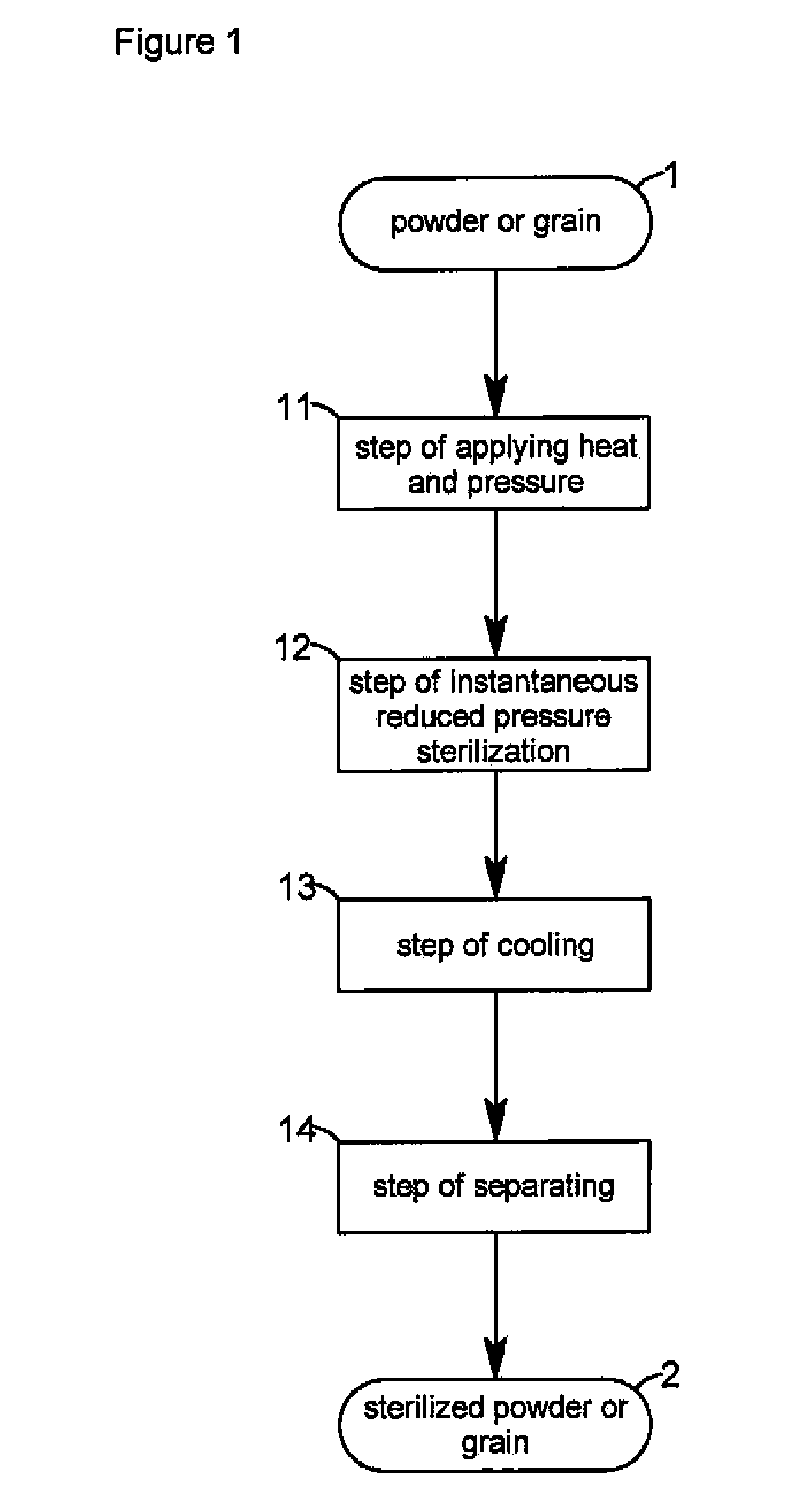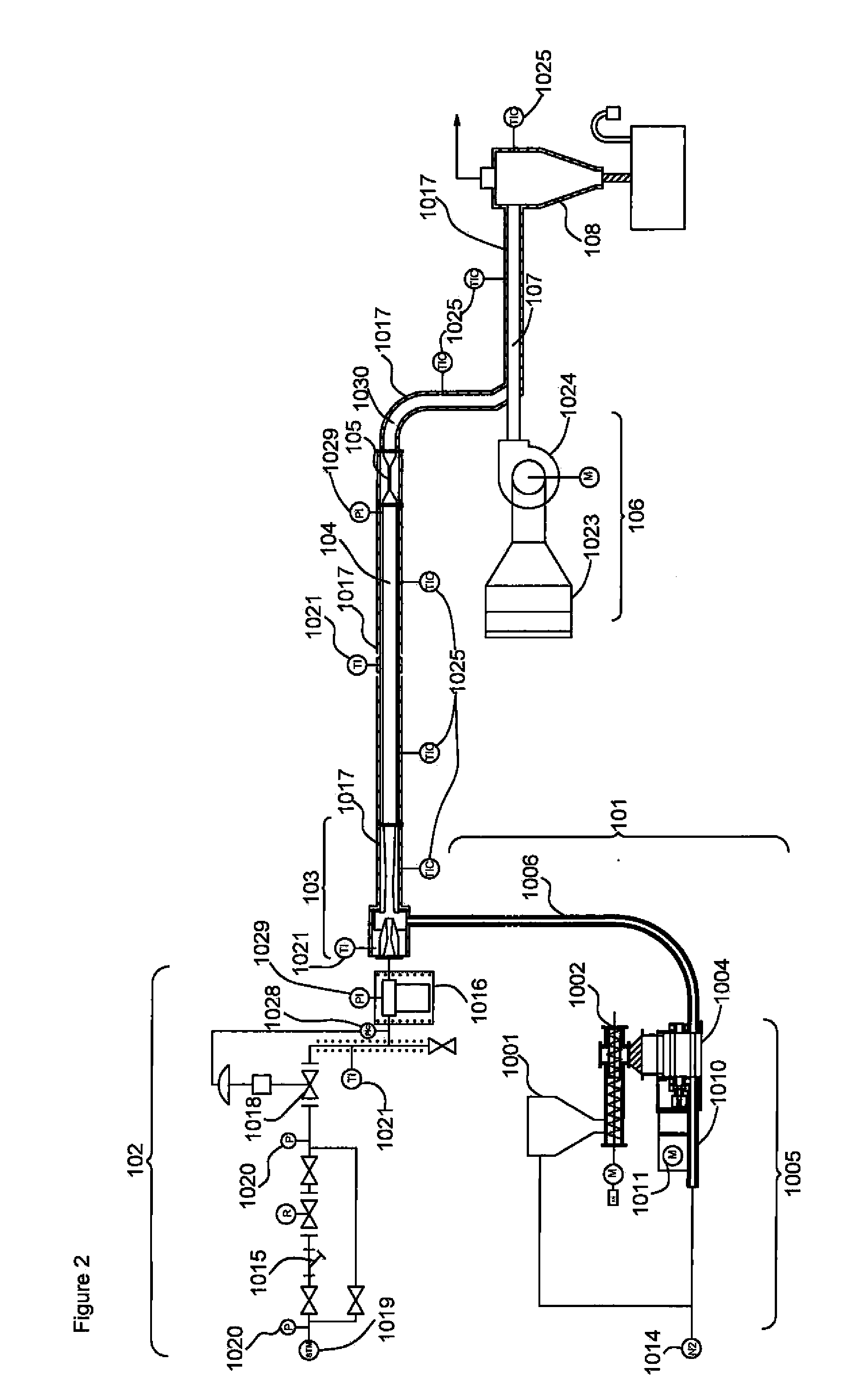Method for Sterilizing Powder or Grain and Sterilizing Apparatus Employing the Same
a technology of sterilizing apparatus and powder, which is applied in the direction of lavatory sterilization, seed preservation by pressure variation, disinfection, etc., can solve the problems of degrading affecting so as to achieve rapid and simple sterilization, high utility value, and the effect of reducing the quality of powder or grain
- Summary
- Abstract
- Description
- Claims
- Application Information
AI Technical Summary
Benefits of technology
Problems solved by technology
Method used
Image
Examples
Embodiment Construction
[0045]Hereinafter, an embodiment of the present invention will be specifically described. FIG. 1 is a flowchart showing the procedure of a method for sterilizing powder or grain of the present invention. FIG. 2 is a schematic view showing the configuration of an embodiment of a sterilizing apparatus employing the method for sterilizing powder or grain of the present invention.
[0046]As shown in FIG. 1, the present invention provides a step of applying heat and pressure 11 in which powder or grain 1 is supplied into a heated gas flow pipe, and the powder or grain is transferred through the heated gas flow pipe by a heated condensable gas under heated and pressurized conditions, and a step of instantaneous reduced pressure sterilization 12 in which the heated condensable gas and the powder or grain are instantaneously released into a space having a pressure lower than that in the heated gas flow pipe, water contained in microorganisms and the like adhering to the powder or grain is boi...
PUM
| Property | Measurement | Unit |
|---|---|---|
| pressure | aaaaa | aaaaa |
| temperature | aaaaa | aaaaa |
| temperature | aaaaa | aaaaa |
Abstract
Description
Claims
Application Information
 Login to View More
Login to View More - R&D
- Intellectual Property
- Life Sciences
- Materials
- Tech Scout
- Unparalleled Data Quality
- Higher Quality Content
- 60% Fewer Hallucinations
Browse by: Latest US Patents, China's latest patents, Technical Efficacy Thesaurus, Application Domain, Technology Topic, Popular Technical Reports.
© 2025 PatSnap. All rights reserved.Legal|Privacy policy|Modern Slavery Act Transparency Statement|Sitemap|About US| Contact US: help@patsnap.com


